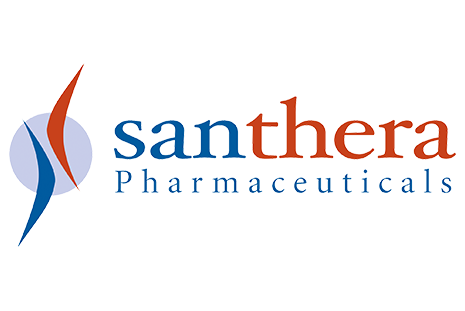
A publication in the journal Neurology was released today describing efficacy studies of vamorolone, a treatment option being evaluated as a potentially safer alternative to corticosteroids, in people with Duchenne.
PPMD is pleased to learn that according to this publication vamorolone shows marked improvement of multiple tests of strength and endurance in patients treated with either 2 or 6 mg/kg/day.
PPMD was an earlier funder of this important research and we look forward to continued updates from ReveraGen and Santhera.
Santhera’s Update:
Santhera Announces Publication by ReveraGen of Positive Phase IIa-Extension Study Results with Vamorolone in Patients with Duchenne Muscular Dystrophy
Pratteln, Switzerland, August 27, 2019 – Santhera Pharmaceuticals (SIX: SANN) announces publication by ReveraGen of positive study data with vamorolone in patients with Duchenne muscular dystrophy (DMD). Data from 6-month Phase IIa-extension study (VBP15-003) published in Neurology [1] demonstrated dose-related improvement of muscle function in patients with DMD treated with vamorolone.
Eric Hoffman, PhD, Chief Executive Officer of ReveraGen, commented: “The 6-month extension study in comparison to natural history study data demonstrated dose-dependent improvement in timed function tests. Vamorolone was reported to be safe and well tolerated up to the highest dose tested (6.0 mg/kg/day). Based on these data, vamorolone has potential to replace standard corticosteroids currently used in patients with DMD.”
Clinical development of Vamorolone in patients with DMD
The clinical development program with vamorolone in patients with DMD was initiated following a clinical pharmacology study (VBP15-001) in healthy volunteers in which biomarker assessments indicated reduced occurrence of side effects typical for traditional corticosteroid drugs, such as prednisone and deflazacort (bone fragility, metabolic disturbance, immune suppression) [2].The Phase IIa-extension study (VBP15-003) published online in Neurology [1] was a 6-month extension to the preceding Phase IIa study (VBP15-002) assessing the efficacy and safety of vamorolone in 48 boys with DMD aged 4 to <7 years [3]. Oral administration of vamorolone at all doses tested (0.25, 0.75, 2.0 and 6.0 mg/kg/day in 12 boys per treatment group) was safe and well tolerated. Mean changes from baseline to weeks 12 and 24 for the primary efficacy outcome, time to stand from supine measured as velocity, showed dose- and time-related improvements. The mean difference in change from baseline to week 24 was significant for the comparison of the 2.0 and 6.0 mg/kg/day groups to the lowest 0.25 mg/kg/day group (p=0.02 and p=0.04, respectively). The mean difference in change from baseline to week 24 was also significant for comparison of the 2.0 mg/kg/day vamorolone group to an untreated comparator cohort (p=0.04). Motor function outcomes for secondary endpoints (time to run/walk 10 meters, time to climb stairs, 6-minute walk test and North Star Ambulatory Test) showed a consistent pattern of vamorolone dose proportional improvement. Specifically, the 6.0 mg/kg/day dose showed significant improvements in time to run/walk 10 meters (p=0.006) and 6-minute walk test (p=0.002) versus the lowest 0.25 mg/kg/day dose group. Vamorolone treatment led to increased serum levels of osteocalcin, a biomarker of bone formation, suggesting possible reduction of bone morbidities typically associated with corticosteroids. Biomarker outcomes for adrenal suppression and insulin resistance also indicated better tolerability of vamorolone treatment, relative to published studies of corticosteroid therapy.
Patients completing this extension study were offered continued treatment with vamorolone under a 2-year long-term extension protocol (VBP15-LTE), and the majority of patients and families opted for continuation with vamorolone rather than transition to standard of care with corticosteroids.
Building on the promising preliminary clinical data from Phase I and IIa studies, the currently ongoing Phase IIb VISION-DMD study (VBP15-004; clinicaltrials.gov NCT03439670) is designed as a pivotal trial to demonstrate efficacy and safety of vamorolone. This double-blind study is enrolling approximately 120 boys aged 4 to <7 with DMD that have not yet been treated with corticosteroids, randomized to one of four groups: low dose vamorolone (2.0 mg/kg/day), high dose vamorolone (6.0 mg/kg/day), prednisone (0.75 mg/kg/day), or placebo. After the initial 24-week treatment period, the prednisone and placebo groups will cross-over to vamorolone. The second treatment period then has all patients treated for an additional 24 weeks with vamorolone. Clinical outcomes for efficacy include timed function tests and measures of muscle strength and endurance. Clinical outcomes for safety include monitoring of weight gain, bone metabolism, cataracts, and biomarkers of metabolic disturbances. The study is being conducted at approximately 30 sites across North America, Europe, Israel and Australia. For more information, see: https://vision-dmd.info/2b-trial-information.
Vamorolone has been granted Orphan Drug status in the US and in Europe, and has received Fast Track and Rare Pediatric Disease designations by the US FDA.
About Vamorolone – first-in-class dissociative steroid
Vamorolone is a first-in-class drug candidate that binds to the same receptors as corticosteroids but modifies the downstream activity of the receptors [4, 5]. This has the potential to ‘dissociate’ efficacy from typical steroid safety concerns and therefore could replace existing corticosteroids, the current standard of care in children and adolescent patients with DMD. There is significant unmet medical need in this patient group as high dose corticosteroids have severe systemic side effects that detract from patient quality of life.Vamorolone is being developed by US-based ReveraGen BioPharma Inc. with participation in funding and design of studies by several international non-profit foundations, the US National Institutes of Health, the US Department of Defense and the European Commission’s Horizon 2020 program. In November 2018, Santhera acquired from Idorsia the option to an exclusive sub-license to vamorolone in all indications and all countries worldwide (except Japan and South Korea).



 by: Parent Project Muscular Dystrophy
by: Parent Project Muscular Dystrophy

